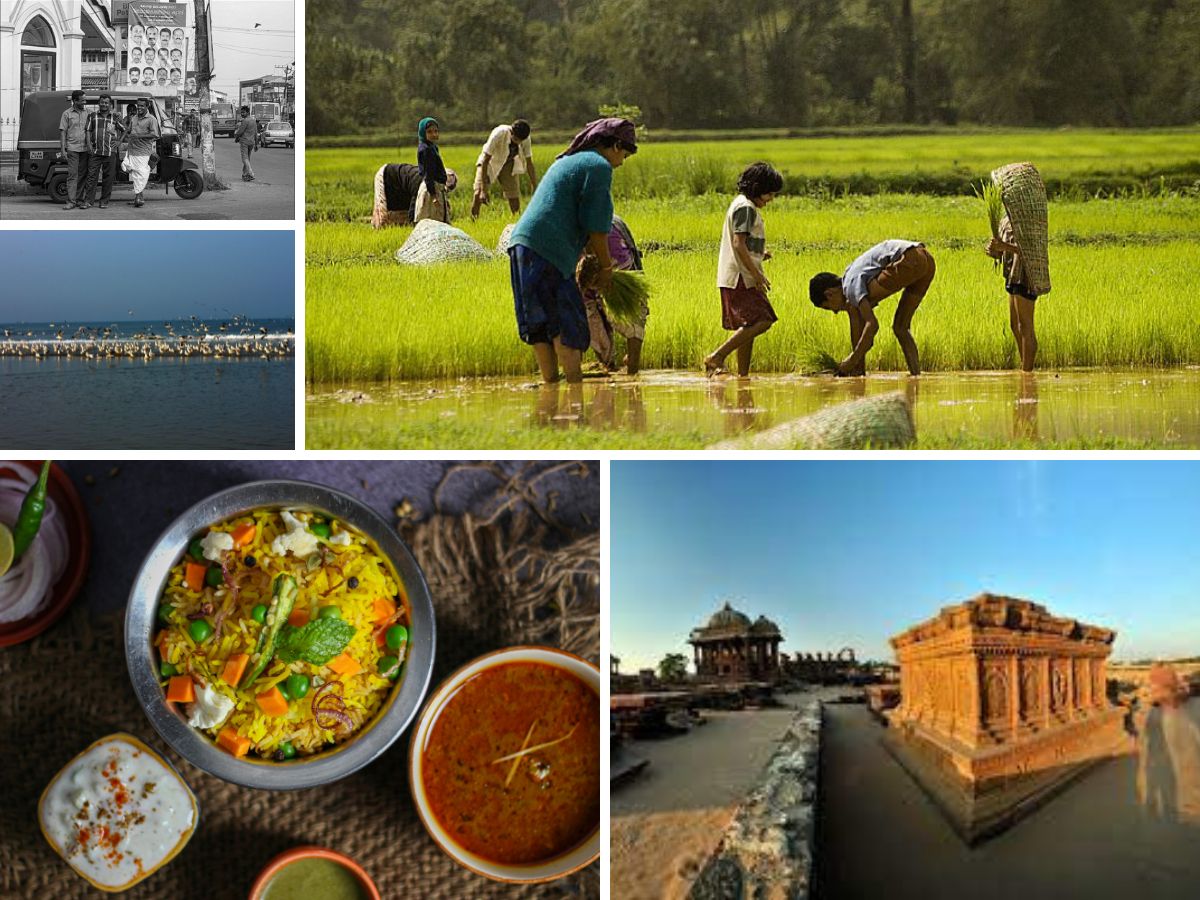What is cultural tourism?
Cultural tourism refers to the practice of traveling to experience the arts, heritage, lifestyle, and distinctive character of a particular region or community. It involves immersing oneself in the cultural and historical aspects of a destination, including its traditions, customs, architecture, art, and local cuisine. Cultural tourism seeks to gain a deeper understanding and appreciation of the unique identity of a place, its people, and their way of life.
This form of tourism often involves visits to museums, historical sites, art galleries, festivals, performances, and other cultural events. Travelers engage in activities that allow them to interact with the local population, learn about their traditions, and experience the cultural richness of the destination. Cultural tourism can take various forms, ranging from exploring ancient archaeological sites and UNESCO World Heritage sites to participating in local celebrations and enjoying traditional music and dance.
In addition to promoting cultural exchange, cultural tourism can also contribute to the preservation and promotion of local heritage, fostering economic development in communities by attracting visitors and generating income for local businesses. It is a way for travelers to broaden their horizons, gain new perspectives, and contribute to the preservation of cultural diversity around the world.
Examples of cultural tourism
Cultural tourism encompasses a wide range of activities and experiences lets deep dive into some specifics in details:
- 1. Museum Visits: Travelers visit museums to explore art, history, and culture. Examples include the Louvre in Paris, the British Museum in London, or the Metropolitan Museum of Art in New York.
- 2. Historical Sites: Tourists visit historical landmarks and heritage sites to learn about the past. Examples include the Pyramids of Giza in Egypt, Machu Picchu in Peru, or the Acropolis in Athens.
- Cultural Festivals: Attending cultural festivals allows tourists to experience local traditions and celebrations. Examples include Diwali in India, Carnival in Rio de Janeiro, or Oktoberfest in Germany.
- 3. Culinary Tourism: Exploring local cuisine is a significant aspect of cultural tourism. Travelers may take food tours, participate in cooking classes, or dine at traditional restaurants to experience local flavors.
- 4. Art and Performance: Attendees go to concerts, theater performances, and art exhibitions to appreciate the local artistic scene. Examples include Broadway shows in New York, the opera in Vienna, or the Venice Biennale for contemporary art.
- 5. Architectural Tours: Exploring unique architecture is a form of cultural tourism. Examples include visiting historical buildings like the Taj Mahal in India, the Colosseum in Rome, or modern landmarks like the Burj Khalifa in Dubai.
- 6. Cultural Workshops: Participating in workshops, such as traditional craft-making, dance, or music lessons, allows tourists to engage actively with local cultural practices.
- Religious Tourism: Visiting religious sites and participating in religious ceremonies is a form of cultural tourism. Examples include pilgrimages to Mecca, the Vatican City, or the Golden Temple in Amritsar.
- 7. Language Immersion Programs: Travelers may engage in language learning programs to immerse themselves in the local language and culture.
- 8. Ethnic Villages: Some cultural tourists visit ethnic villages to experience and learn about the lifestyles, traditions, and customs of specific communities.
These examples highlight the diverse ways in which cultural tourism manifests, emphasizing the importance of experiencing and appreciating the unique cultural aspects of a destination.
Is it beneficial for tourism as a whole?
Cultural tourism can bring several benefits to the tourism industry as a whole, as well as to the destinations and communities involved. Some of the key benefits include:
- 1. Economic Impact: Cultural tourism can significantly contribute to the local economy. Visitors spend money on accommodations, meals, transportation, guided tours, and souvenirs, providing a source of income for local businesses and residents.
- 2. Job Creation: The demand for cultural tourism experiences creates employment opportunities in various sectors, including hospitality, transportation, tour guiding, and the arts. This can help reduce unemployment rates and stimulate economic growth.
- 3. Preservation of Cultural Heritage: The influx of tourists often leads to increased awareness and support for the preservation of cultural heritage sites and traditions. Governments and local communities may invest in the maintenance and restoration of historical landmarks, museums, and cultural events.
- 4. Cultural Exchange: Cultural tourism fosters cross-cultural understanding and promotes global harmony. Tourists have the opportunity to engage with local communities, learn about different customs, and gain a deeper appreciation for cultural diversity.
- 5. Infrastructure Development: The need to accommodate tourists often drives improvements in local infrastructure, including transportation networks, hotels, and recreational facilities. This can benefit both tourists and local residents.
- 6. Community Empowerment: Cultural tourism can empower local communities by involving them in the tourism industry. Initiatives such as community-based tourism and responsible tourism practices aim to ensure that local communities benefit directly from tourism activities.
- 7. Educational Opportunities: Cultural tourism provides educational opportunities for both tourists and locals. Visitors gain insights into the history, art, and traditions of a destination, while local communities may develop educational programs to share their cultural heritage.
- Promotion of Cultural Understanding: Exposure to different cultures through tourism helps break down stereotypes and fosters a greater understanding and appreciation for diversity. This can have positive implications for global relations and cultural diplomacy.
- 8. Sustainable Tourism Practices: Cultural tourism can promote sustainable practices by encouraging responsible tourism behaviors. Initiatives focused on environmental conservation, cultural sensitivity, and community engagement contribute to long-term sustainability.
While cultural tourism offers numerous benefits, it’s crucial to manage tourism growth responsibly to mitigate potential negative impacts such as over-tourism, cultural commodification, and environmental degradation. Sustainable tourism practices aim to balance the economic benefits of tourism with the preservation of cultural and natural resources for future generations.
Future of cultural tourism ?
The future of cultural tourism is likely to be shaped by various trends and developments, including technological advancements, changing traveler preferences, and global challenges. Here are some potential aspects of the future of cultural tourism:
- 1. Digital and Virtual Experiences: Advances in technology, such as virtual reality (VR) and augmented reality (AR), may offer new ways for travellers to experience cultural destinations remotely. Virtual tours, interactive exhibits, and digital storytelling can enhance the accessibility of cultural content.
- 2. Sustainable and Responsible Tourism: There is a growing awareness of the environmental and socio-cultural impacts of tourism. The future of cultural tourism may see an increased emphasis on sustainable and responsible practices, including eco-friendly accommodations, community engagement, and efforts to minimize the carbon footprint of travel.
- 3. Personalization and Customization: Travelers are increasingly seeking personalized and unique experiences. Cultural tourism may evolve to offer more customized itineraries, allowing visitors to tailor their journeys based on specific cultural interests, preferences, and values.
- 4. Cultural Exchange Programs: With a focus on authentic and immersive experiences, cultural exchange programs may become more popular. Travelers may seek opportunities to live with local communities, participate in cultural workshops, and engage in meaningful interactions with residents.
- 5. Integration of Technology for Cultural Interpretation: Smartphones and other digital devices may play a significant role in providing on-the-go cultural interpretation. Apps, audio guides, and location-based services can offer real-time information about historical sites, artworks, and cultural events.
- 6. Culinary Tourism Innovation: Food is a central aspect of cultural tourism, and the future may see continued innovation in culinary experiences. This could include more immersive cooking classes, farm-to-table experiences, and the exploration of local food markets.
- Heritage Conservation and Adaptive Reuse: Efforts to conserve and protect cultural heritage sites may increase, with a focus on adaptive reuse and sustainable preservation. Historic buildings and sites could be repurposed for cultural events, exhibitions, or community activities.
- 7. Cultural Diplomacy: Cultural tourism can play a role in fostering international relations and understanding. Governments and organizations may increasingly use cultural diplomacy initiatives to promote positive global interactions.
- 8. Local Community Involvement: Recognizing the importance of local communities in the success of cultural tourism, future initiatives may prioritize the active involvement and empowerment of residents. Community-based tourism models could become more prevalent.
- 9. Multi-Destination Cultural Routes: Travelers may be drawn to multi-destination cultural routes that allow them to explore interconnected cultural landscapes, heritage trails, or thematic journeys.
While these trends offer exciting possibilities, it’s essential to address challenges such as over-tourism, cultural commodification, and the need for sustainable practices. The future of cultural tourism will likely involve a balance between technological innovation, cultural preservation, and responsible tourism practices.




